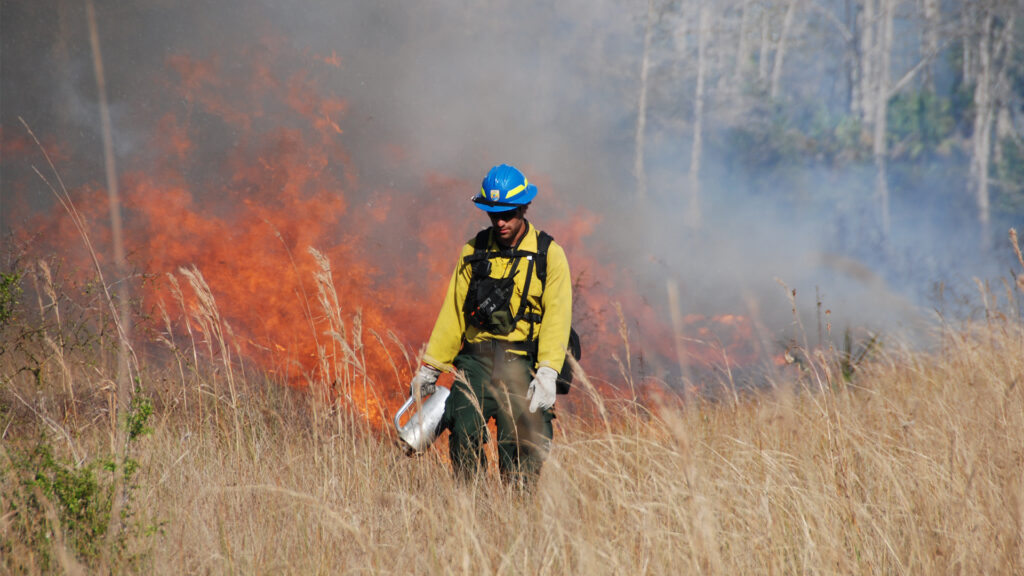A roundup of news items related to climate change and other environmental issues in Florida:
Foresters find that prescribed fires can help keep carbon out of the atmosphere | WFSU

Fires are destructive: recall the 2018 Paradise Camp Fire in California that killed 85 people and destroyed 19,000 buildings. That fire was ignited by failed power lines, but it gained steam due to a record drought and extremely dry conditions exacerbated by a changing climate. In the foothills of North Florida and South Georgia, there’s a similar, and lingering threat.
At the Jones Center in South Georgia, Longleaf pine trees stretch their gangly limbs to the sky. Underneath them, there’s a patchy underbrush where creeping vines, juvenile pines, and all manner of bushy plants go through various incarnations of density — from tightly gnarled, to sparsely populated. And, it’s on fire.
“We don’t want to burn everything, we want to burn one section at a time,” explains Conservation Fellow Kurt Sigler, while standing in front of a four-wheeler with a giant flame thrower on the back.
State-run program aimed to rebuild homes after hurricane. Years later, many still waiting | Miami Herald
Marilynn Distefano misses feeding the colorful birds in her backyard. These days, she mostly just listens to them through the window of her room in a Fort Myers nursing home, where she’s lived since December — her latest stop since the state promised to rebuild her hurricane-wrecked home.
“I miss everything about being at home, and my neighbors,” said Distefano, 81. “I just want to go home.”
She can’t. As Atlantic hurricane season 2023 opens on Thursday, Distefano is one of thousands of people waiting on the state-run Rebuild Florida program, which was supposed to help low-income residents rebuild their hurricane-ravaged homes.
Iconic Florida bird faces extinction – one group is fighting to save it | WMNF
Property owners could soon have one additional tool to help save a native Florida bird that’s at risk for extinction.
The Florida scrub jay is the only bird endemic to Florida. It means they breed nowhere else in the world, except in the state. That’s why Audrey DeRose-Wilson, Audubon Florida’s director of bird conservation, is concerned.
“Today their population is just 10% of what it was about 200 years ago.”
If you have any news items of note that you think we should include in our next roundup, please email The Invading Sea Editor Nathan Crabbe at ncrabbe@fau.edu. Sign up for The Invading Sea newsletter by visiting here.



